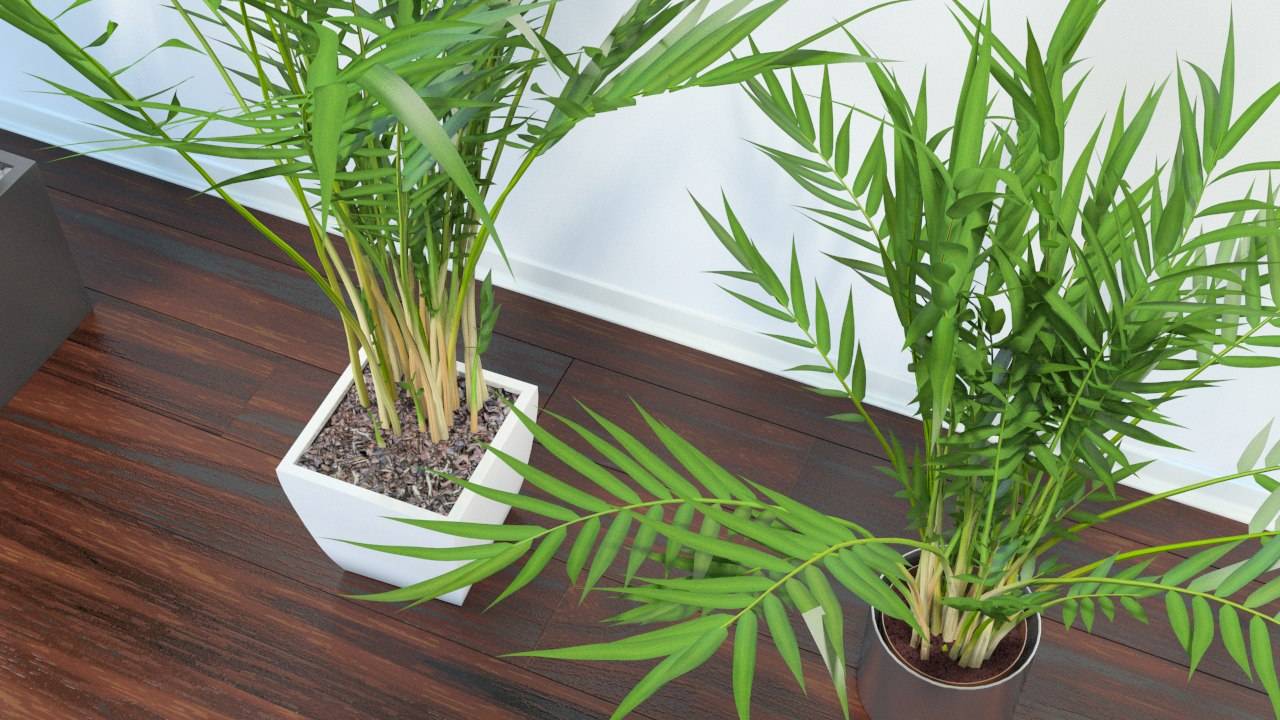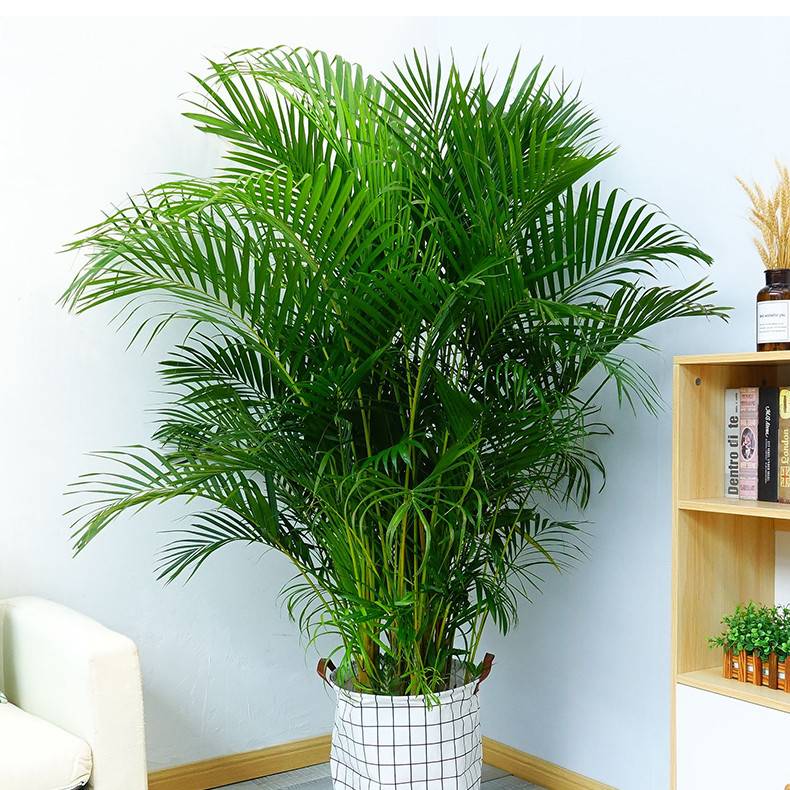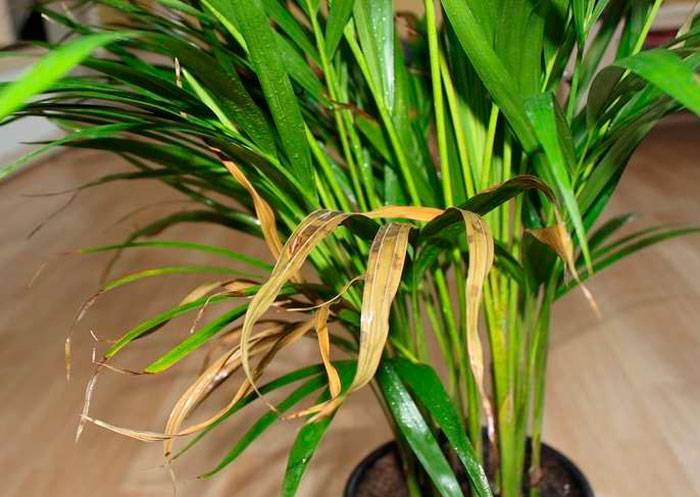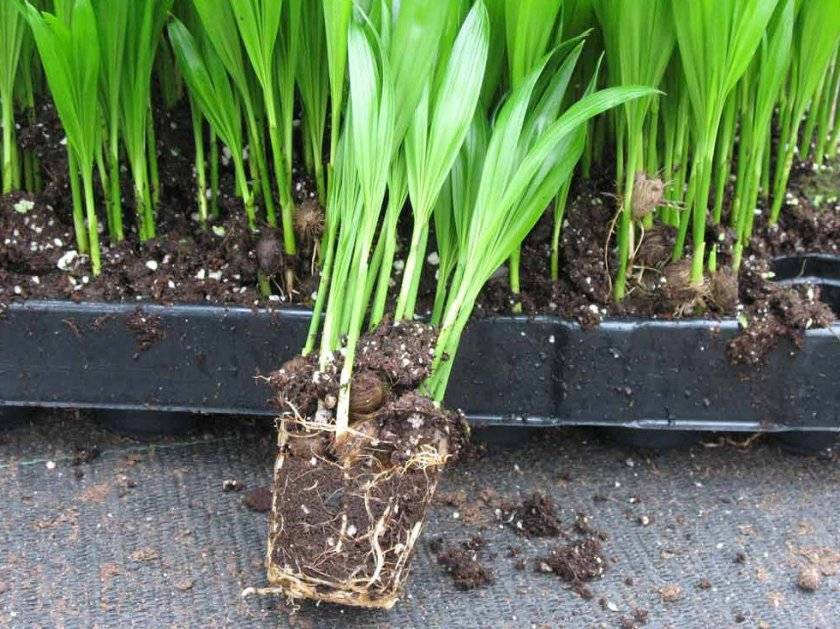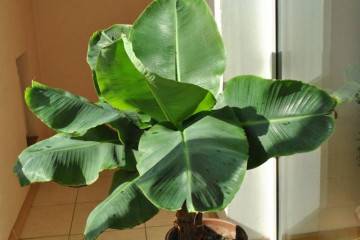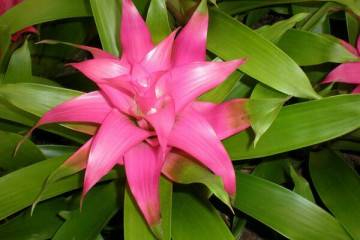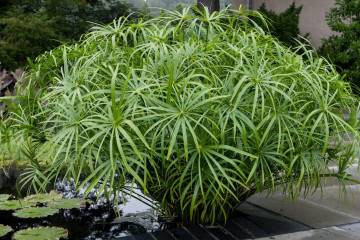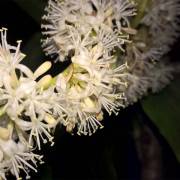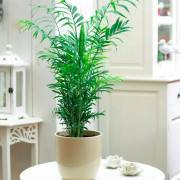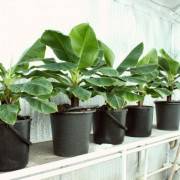Areca palm - home care and reproduction
Content:
Areca can be found both in winter gardens and greenhouses, as well as in houses, apartments, offices. It is appreciated for its green feathery leaves that can decorate a room. With proper maintenance, the bushes do not lose their decorative appearance for a long time. Below is information on caring for areca palm at home.
Description of the species areca Katechu, or betel palm
Areca flower belongs to the Palm family. The genus of Arecs has about 50 plant species. They are united by the presence of a thin stem and feathery leaves. At home, 3 types of areca are cultivated: Catechu (betel palm), yellowing, three-stalk.
Areca Katechu is the most popular among flower growers. The leaves are feathery, hanging. Their length can reach 2 m. Paniculate inflorescences of yellow color are formed in the leaf axils. Fruits are soon formed from them.
Care
In order for the areca to look decorative for a long time, it must be properly maintained.
Pot selection
A few days after purchase, the flower is transplanted into a new container. It should not be much larger than the previous one, since the areca will not develop until the root system has braided the entire pot.
Landing is carried out by transshipment method. In this case, the clod of earth is not broken, but transferred to another container. The space between the walls of the pot and the root system is covered with prepared soil. The root collar is not buried.
The substrate for the Areca is selected lightweight, breathable and permeable. It is made from high moor peat, pine bark, perlite, charcoal. If the grower does not have the ability to prepare soil mixture, he can purchase ready-made soil.
Watering and humidity
Water the areca with warm, settled water. It should be free of chlorine. Watering is carried out after the top layer of the soil has dried. Excess water is poured out of the pan after a few minutes.
Over-watering is just as harmful as a lack of moisture. In the first case, the root system can be affected by pathogenic microorganisms leading to the death of the plant. With insufficient moisture, the tips of the leaves begin to dry.
The decorativeness of the flower is also lost when the indoor air is too dry. To increase the humidity, the bushes are sprayed with water from a spray bottle. It must be well-separated, otherwise whitish spots may remain on the leaf plates.
Temperature regime
Areca Catechu tolerates air temperatures in the range from 20 ° C to 30 ° C. Best of all, she will feel at a room temperature of 22-24 ° C. It is undesirable for it to drop to 16 ° C.
Top dressing and fertilizers
The flower needs feeding from April to the end of September. Areca is fertilized once every 2 weeks. For this purpose, substances intended for feeding palms are used. They are of great benefit, because without feeding, the leaf plates become faded, inexpressive.
Fertilizers are applied a few minutes after watering. Otherwise, the root system of plants may be burned with salts. Areca is fed once a month in autumn. In winter, she is given a rest period.
Growing and transplanting problems
If you take care of a flower correctly, it grows quickly and looks spectacular. In case of errors in the content, the areca loses its decorative appearance. The main problems with growing and transplanting are as follows:
- the tips of the leaves begin to dry out. Probable reasons - lack of moisture in the soil, dry indoor air;
- Areca leaf tips turn brown. This can happen when the flower is kept at too low temperatures;
- the lower leaves dry out. This is a natural process that occurs when a flower ages;
- leaf plates become light. There is a problem with a lack of lighting;
- decay of the root system. Occurs when the areca is over-watered. Pathogenic microorganisms gradually destroy the plant;
- Areca grows poorly. Perhaps the root collar was too deep during transplantation.
Diseases and pests
If areca is chosen, home care for it will be easy. But even with improperly performed measures, the flower can be struck by diseases and pests. If frequent and abundant watering has been carried out for a long time, there is a possibility of root rot formation.
To save the plant, you need to remove it from the pot, trim the affected parts, treat them with a fungicide, after which the areca is transplanted into a container with new soil.
Of the pests, the culture can be chosen by the scale insect, whitefly, aphid, spider mite. The scabbard is found by brown spots. Insects are removed by wiping the leaves with a cotton swab dipped in soapy water.
If the air is too dry, spider mites can settle on the bushes. He enmeshes the leaves with a cobweb, draws juice from them. It is washed off under the pressure of water. If this does not help, insecticides are used, for example, actellik, fitoverm.
Reproduction methods
Areca can be propagated by seed or by dividing the bush. In indoor conditions, flowering occurs infrequently, so the seed is purchased in the store.
Seeds
Reproduction is performed as follows:
- The seeds are soaked for 20-30 minutes. in water with the addition of epin.
- A substrate consisting of peat and sand is poured into the container.
- The soil is leveled, sprayed with water from a spray bottle.
- Seeds are spread over the surface, slightly pressed into the depths.
- Cover the container with glass or transparent foam.
The shelter is removed every day, the container with the seed is ventilated. This is necessary so that pathogenic microorganisms do not form inside the container from excess moisture. As soon as the sprouts hatch, the covering material is removed.
When young plants grow up a little, they are planted in separate pots. Further care for the areca consists in timely watering, periodic feeding, preventive spraying against diseases and pests.
By dividing the bush
When the areca grows, it can be divided into parts. To do this, the bush is removed from the pot, the old substrate is removed. The areca is carefully divided into parts. Each cut is planted in a separate container filled with light soil.
Plant pots should be kept in a cool, dark place first. When the bushes adapt, they are placed in a bright, but protected from direct sunlight. After about a month, the culture begins to feed.
Areca is a beautiful ornamental plant. She needs watering as the top layer of the soil dries out, top dressing twice a month, preventive spraying from diseases and pests. If agrotechnical measures are carried out correctly, the areca palm will delight those around it with feathery green leaves for a long time.

